
Nebraska’s Collaboration Induces Investment
28 May, 2015
By Rachel Duran
In Nebraska, businesses leaders tell economic development officials they face “good problems” when it comes to the business climate. Earlier this year, public officials and company leaders in 17 of Nebraska’s communities shared their experiences and insights with Brenda Hicks-Sorensen, director, Nebraska Department of Economic Development (DED). The impressions gathered from the tour will help shape the state’s economic development strategic plan going forward.
“Business leaders talked a lot about the advantages here, including the high-quality workforce and advantageous low energy costs related to running their businesses,” writes Hicks-Sorensen in an email correspondence. “They also talked about the opportunities to attract talent and build or develop more housing. A common theme was that we have a lot of ‘good problems.’ So while there’s a lot of growth and communities and businesses adding jobs, our goals will be to focus on ways to attract talent, and to add to our housing stock.”
What’s more, in regard to business climate advantages, Nebraska’s leaders run a fiscally-conservative state, balancing its budget, funding its pensions, keeping the costs of electricity low, and approaching new business opportunities in a welcoming and collaborative way.
Down to Business
• Nebraska is home to five Fortune 500 companies, which include Berkshire Hathaway, ConAgra Foods, Mutual of Omaha, Peter Kiewit Sons and Union Pacific Railroad.• In 2014, CNBC ranked Nebraska as the fourth best state to conduct business.
• Nebraska was ranked No. 3 in the 2014 Top 10 Pro-Business States report, issued by Pollina Corporate Real Estate.
Industries and Innovations
Nebraska targets 12 primary industry clusters, and is actively focused on four targets: manufacturing, information technology, biosciences, and warehousing, distribution and logistics.
Manufacturing strengths include machinery related to the agriculture industry, precision metals and food processing. The state’s agricultural background supports the specialization of ag feedstocks and chemicals. Companies in the state also specialize in the transportation of bioscience materials and products.

Agile Sports Technologies started in Lincoln by two University of Nebraska students. Photo: Lincoln Partnership for Economic Development
Hicks-Sorensen notes among the advantages for these sectors are the fact that the governor is focused on an open door policy related to industry input about regulatory issues. There are also industry-driven councils, which in addition to hosting industry forums, serve as advocates, advisors and leaders for state agencies.
Switching to industry-related business expansions and startups, the last year has been busy for the DED, which supported several projects. One expansion, by Graepel North America in LaVista, features a new 45,000-square-foot facility. This manufacturer of products for companies such as Deere & Co., Kenworth, and Peterbilt Motors Co., was awarded $150,000 from the DED’s Site and Building Development Fund.
In Cheyenne County, the DED also offered support to Adams Industries, and Bell Lumber and Pole Co. The former invested $6.5 million and created 25 jobs with its expansion; and the latter invested $8.4 million and created 30 jobs with its expansion. In Columbus, Superior Industries acquired existing manufacturer Grey Stone Inc., and conducted subsequent renovations and expansions, investing $12 million, adding 37,000 square feet, and creating 100 new jobs.
In Omaha, industry strengths include the insurance industry, financial services, data centers, agribusiness and logistics. Noteworthy expansions include Pacific Life Insurance Co., which is building a new $50 million building. The company selected Omaha six years ago, and its operation “is a strong indication that we do have a competitive advantage for the insurance industry,” says Randy Thelen, senior vice president, Greater Omaha Economic Development Partnership.
Thelen says nearly 30 insurance companies are domiciled in Omaha, supported by talent and university programs that feed the industry.
“Omaha has always been at this major center of telecom infrastructure,” Thelen says. “Historically, we were known as a call center community because of that great telecom infrastructure. Today, it transitions to both data centers and shared services operations for largely finance and technology companies.”
The telecom infrastructure combined with favorable power rates and reliability has attracted companies such as Google, Fidelity, Travelers, Yahoo, and Linked In, which have data centers in the market. PayPal also has a large concentration of employees in the community.
The infrastructure build out was a result of the presence of Offutt Air Force Base, which is home to the U.S. Strategic Command. “The command is solely based on their ability to connect globally,” Thelen says. “This is the epicenter for intelligence work and communication work for the defense industry.” Currently, there is a more than $1 billion construction project underway to build a new Strategic Command headquarters.
Omaha also has deep roots in agriculture, and activities run the gamut, including a major campus for Cargill, which has attracted a campus of suppliers. The region is also home to ConAgra.
Moving to Lincoln, expansions include companies involved in manufacturing, back office and computer programming, says Pat Haverty, vice president, Lincoln Partnership for Economic Development. Expansions include Hexagon Lincoln, which added 100,000 square feet to its operations, and 100 employees. IAC Acoustics purchased an existing company and built a new 200,000-square-foot facility, adding 125 jobs in the last three years.
Lincoln is also home to a growing company, Agile Sports Technologies Inc., which produces Hudl.com. The company was started by two University of Nebraska-Lincoln students who were addressing a need for the university’s football team in regard to watching video. The company now has 200 employees and is conducting business internationally. Haverty says the quality of place in Lincoln has created a strong ecosystem for startups and large companies alike. He credits $500 million in new investments in the downtown, which foster the live, work and play atmosphere executives and their talent are looking for. The Pinnacle Bank Arena is one of the notable developments.
These assets are important in retaining talent in the Lincoln area. “There is a real opportunity to connect with the university and connect with those students who provide the quality workforce that companies are looking for,” Haverty says. In addition to the University of Nebraska, Lincoln is home to other colleges and universities. “There are 40,000 students in Lincoln during the school year.”
Talent and Education
In regard to Nebraska’s workforce training and the education system, Hicks-Sorensen points out the newly-formed collaborations between DED, the departments of education and labor, and industries, which is leading to better communications and to finding solutions to industries’ current and future needs related to workforce.
In terms of evolving workforce development initiatives, career academies have been created in the public school system, including in Grand Island and Lincoln. Also, the Nebraska Logistics Council has established articulation agreements between public and private colleges, and high schools to promote and market logistics career pathways, even going as far as establishing curriculum tracks.
“We are a right-to-work state and have a 70 percent labor participation rate (one of the highest in the country),” Hicks-Sorenson notes. This stems from the importance placed on the state’s public education system. Nebraska’s student-to-teacher ratio and high school graduation rate are among the best in the nation. Through the use of innovative technology, Nebraska has significantly increased distance learning opportunities at both the high school and college levels.
“Over the last five or six years, Omaha has invested heavily in our education and training infrastructure,” Thelen says. “We just passed a half a billion dollar bond issue for Omaha public schools. One of the great strengths of the region starts at the K-12 level. In many urban markets across the country you will find public schools that are not competitive. Eighty percent of our K-12 students attend public schools.”
Also in Omaha, Metropolitan Community College is underway with its largest expansion ever, a $90 million project, which includes the Center for Advanced and Emerging Technologies, which is a partnership opportunity with area companies. “That speaks loudly to their desire to partner and collaborate with industry to meet their needs,” Thelen notes.
Omaha is also home to the University of Nebraska-Omaha, which includes the Peter Kiewit Institute, a world-class engineering and technology center.
Assets
In addition to reinvesting in the education system, Omaha’s leaders are boosting industrial property inventories. The Greater Omaha Economic Development Partnership has secured nine industrial parcels, conducting the due diligence to prepare them for development. “Coming out of the economic downturn we didn’t have that next wave of business parks ready,” Thelen says. “We have taken a bold step to get these nine properties ready.”
In Lincoln, the university is building a new research campus, the Nebraska Innovation Campus, which is 300 acres at the former state fairgrounds. Haverty says 800,000 square feet has been built, and two existing facilities are undergoing renovation. The site features conference, classroom, lab and office space. ConAgra will be the main tenant at the campus; smaller companies are operating from there at this time. The food processing center will move from east campus to this new campus, Haverty adds.
At the Lincoln Municipal Airport, utilities are being run to lots at the 300-acre Enterprise Park. “We anticipate a number of lots will be available early summer of this year,” Haverty says. “Several sites are dual rail served by BNSF and Union Pacific.”
Nebraska’s logistics infrastructure includes Interstate 80, seven national highways, and service from two Class I railroads. The state’s central U.S. location results in lower transportation and logistics costs, Hicks-Sorensen writes.
Outdoors and Recreation
Nebraska features a rapidly expanding network of recreational trails, many high-quality golf courses, and a good supply of wildlife-associated recreational opportunities. In fact, Nebraska features twice the U.S. average of state park acreage, according to www.neded.org’s “Discover the Possibilities” brochure.
Lifestyle
Thelen says of Omaha, “We are a surprise and a delight. Companies continue to invest and stay. And if you assess where we stand, we think we are the top market within the Midwest.” He says the community of 1 million, as a region, wants to work and continue as a strong, dynamic, thriving community.
According to the state’s quality of life promotional materials, vibrant communities are found throughout the state’s 520 incorporated municipalities.
More Info
Nebraska Department of Economic Development
Greater Omaha Economic Development Partnership
Lincoln Partnership for Economic Development
Illustration by nokhoog_buchachon at Free Digital Photos.net
Related Posts
-

Business Starts Here
-
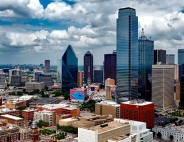
TEXAS ENTERS 2021 AS WORLD’S 9TH LARGEST ECONOMY BY GDP
-

CALIFORNIA: 5TH LARGEST ECONOMY IN THE WORLD
-

MINNESOTA: FIRST IN FIVE-YEAR BUSINESS SURVIVAL RATE
-

CANADA: Alberta. More Open Than Ever
-
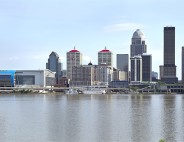
KENTUCKY: The Bluegrass State Is The Right Place To Grow Your Business
-

TENNESSEE: Great Brands Deserve the Great State of Tennessee
-
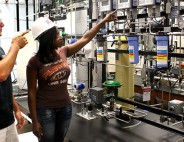
LOUISIANA: Custom Workforce for Expanding
-
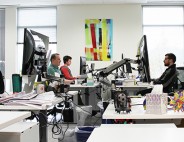
MARYLAND: Home of Innovators
-
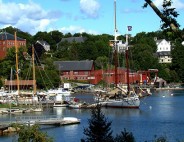
MAINE: Yankee Ingenuity












